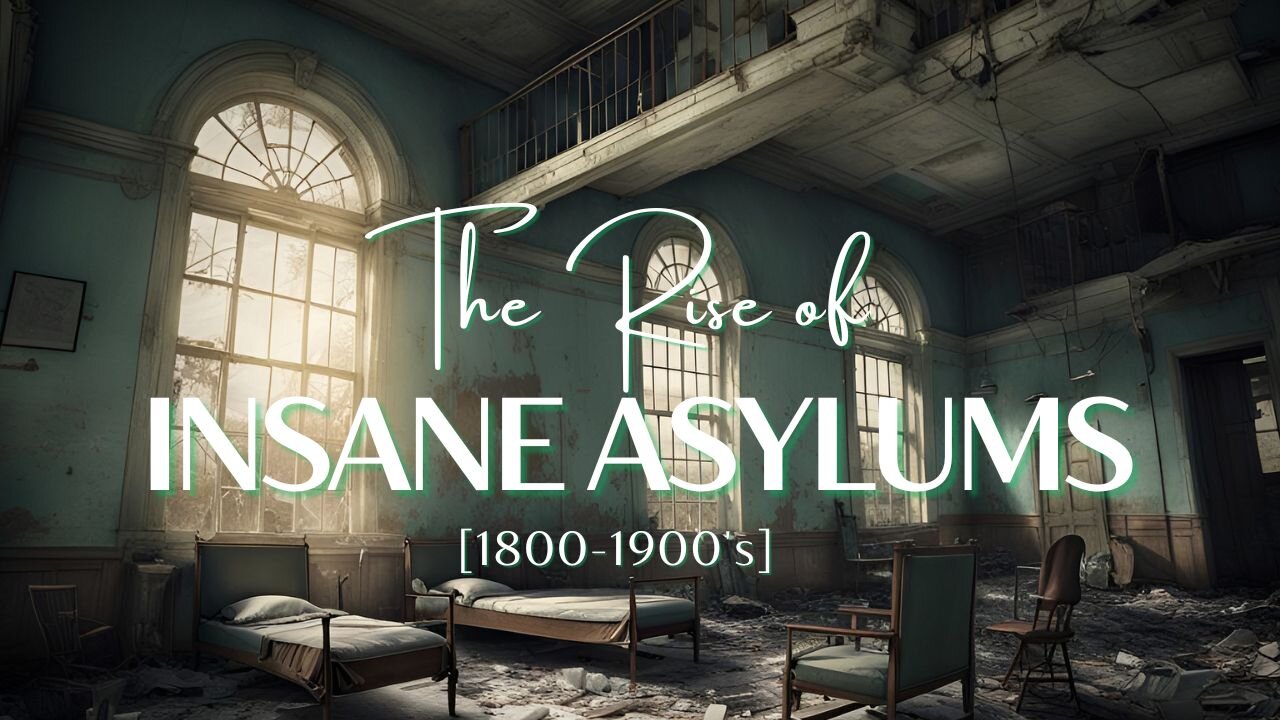Premium Only Content

The Rise of Insane Asylums in the 1800's & their role in The Orphan Trains
The Orphan Train movement ushered in mental asylums in order to recondition people, starting around the 1700's. Vast populations of immigrants travelled to the U.S. from greater Tartaria along with Russia and Eastern Europe. We have to ask the question as to whether people who did not conform and/or agree with the ruling class were confined to these asylums. If that were the case, were there children abandoned in cities and then put on Orphan Trains to disburse them all over the country to families who needed workers on the farm? [1860-1880]
The establishment of mental asylums in the United States during the late 1700s through the 1900s was a significant period in the history of psychiatric care. Here are some key points:
Dorothea Dix, a tireless advocate for psychiatric care for the poor and disenfranchised, is chiefly responsible for the mass construction of state mental hospitals in the U.S. in the 1800s. Waves of immigration from Ireland, Germany, and Italy led to rapid population growth, prompting a greater need for appropriate medical and psychiatric treatment.
Thomas Story Kirkbride, a Pennsylvania psychiatrist, founded the Association of Medical Superintendents of American Institutions for the Insane, a group that later became the American Psychiatric Association. He is best known as the originator of the Kirkbride Plan for the construction of state mental hospitals.
At one point in the 1950s, more than half a million Americans were confined to state psychiatric institutions, many of them for life. Today, the total number of state psychiatric beds in the U.S. sits around 37,000, with most beds on short-term, acute inpatient units in general medical hospitals.
The treatment of mental illness has an unsavory history, and the cruelty inflicted upon the mentally ill in asylums throughout western history has been well-documented. However, in the 1700s and 1800s, reformers such as Philippe Pinel and William Tuke in Europe and Benjamin Rush and Dorothea Dix in the United States led the charge to make humane treatment for mentally ill individuals the norm, with a special emphasis on improving conditions for those who were confined to mental hospitals.
The mass closure of state mental hospitals in the United States coincided with the advent and popularity of neuroleptic medications, the patient rights movement, and the well-intentioned, but poorly delivered, national transition towards community-based mental health care. This period marked a significant shift in the approach to mental health care, with a move away from institutionalization towards community-based care and treatment along with the rise of the pharmaceutical companies.
WHO WAS DOROTHEA DIX?
Dorothea Lynde Dix (April 4, 1802 – July 17, 1887) was an American advocate on behalf of the indigent mentally ill.
• After seeing horrific conditions in a Massachusetts prison, she spent the next 40 years lobbying U.S. and Canadian legislators to establish state hospitals for the mentally ill.
• Her efforts directly affected the building of 32 institutions in the United States.
• She began teaching school at age 14 and later founded the Dix Mansion, a school for girls, along with a charity school that poor girls could attend for free.
• She also began writing textbooks, with her most famous, Conversations on Common Things, published in 1824.
• Dix was also designated as the Superintendent of Army Nurses for the Union Army during the Civil War. She appointed more than 3,000, or about 15%, of Union Army nurses.
• She died on July 17, 1887 and is buried in Cambridge, Massachusetts.
SOURCE
Zachary Denman
Sacred Wisdom Podcast
History of Psychiatric Hospitals - Penn Nursing
https://www.nursing.upenn.edu/nhhc/nurses-institutions-caring/history-of-psychiatric-hospitals/
-
 11:19
11:19
The Aquarius Bus
9 months agoBy 1900, 38% of cars in America were electric! Wanna know how they were powered & charged?
2.18K4 -
 40:14
40:14
Uncommon Sense In Current Times
16 hours ago $1.70 earnedThe Dating Crisis in America | J.P. De Gance on the Church’s Role in Restoring Family & Faith
36.2K3 -
 12:35
12:35
Red Pill MMA
18 hours agoNow We Know The Truth.. Hero Who Stopped Raja Jackson Speaks Out
10.4K7 -
 41:04
41:04
Coin Stories with Natalie Brunell
1 day agoCooking, Culture & Crypto: Norma Chu’s Food Empire Turns Bitcoin Treasury
11.6K -
 8:03
8:03
MattMorseTV
17 hours ago $8.87 earnedThings in the UK just got INSANE...
92K136 -
 3:02:10
3:02:10
daniellesmithab
12 hours agoAlberta Next: Fort McMurray Town Hall
20.6K1 -
 2:11:17
2:11:17
Side Scrollers Podcast
21 hours agoINSANE Illegal Migrant Propaganda Xbox Game + Paypal REFUSES To Pay Dev + More | Side Scrollers
68.7K4 -
 20:58
20:58
GritsGG
1 day agoProtect the President Challenge on Warzone!
24K -
 1:49:07
1:49:07
The Michelle Moore Show
2 days ago'Biden's Immigration Mess, President's Trump Spiritual Cry For Help, English Speaking Truckers Only, Woke CEO's Killing of Conservative Brands, Palantir's Kill Chain' Mark Taylor: The Michelle Moore Show (Aug 25, 2025)
44.7K98 -
 LIVE
LIVE
Lofi Girl
2 years agoSynthwave Radio 🌌 - beats to chill/game to
222 watching